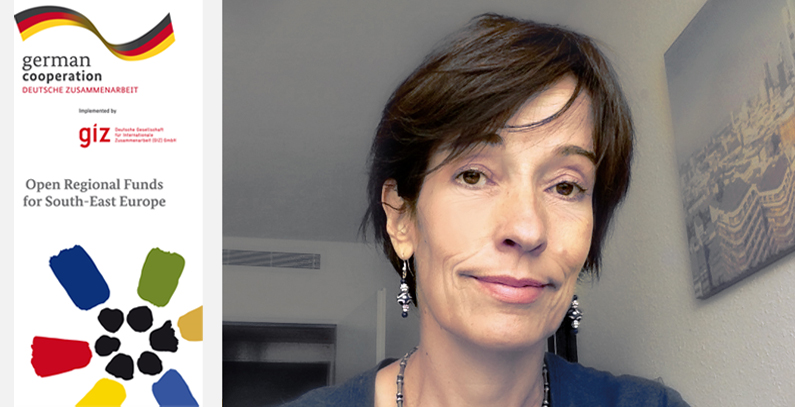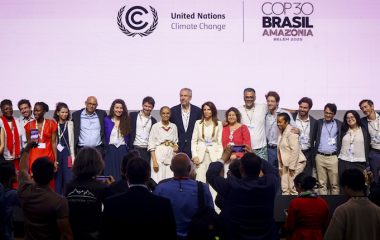
Despite biodiversity’s essential value for economic sectors such as forestry, agriculture, tourism, and fisheries, and its relevance for social and cultural well-being, nature is treated as if it were an unlimited resource in the region of South-East Europe, while environmental protection is often seen as an expense. Why this is happening, but also what the achievements are of the Open Regional Fund for South-East Europe – Biodiversity (ORF-BD), implemented by Deutsche Gesellschaft für Internationale Zusammenarbeit (GIZ), Gabriele Wagner, Sector Fund Manager for the project, explained in an interview with Balkan Green Energy News.
The region of South-East Europe (SEE) is very rich in biodiversity. How well are the ecosystems protected in the region?
Indeed, the SEE region can be considered as a biodiversity hotspot in Europe, while there is still a huge need for more research to assess the current situation and make data available. Biodiversity richness means that the region possesses an important variety of endemic flora and fauna and ecosystems. The SEE region is particularly known for its freshwater biodiversity.
However, the current state of protection and sustainable use of biodiversity (species, habitats, and ecosystems) is far from the desired level mainly due to a lack of financial and human resources, as well as of understanding of its relevance for sustainable development.
Are biodiversity aspects integrated into national development priorities and plans?
The integration of biodiversity aspects into regional, national and local development priorities, including in the 2030 Agenda processes and other sector strategies related to agriculture, tourism, fisheries, transport, and renewable energy is generally at its initial stage in the SEE region, and a lot of effort is yet needed to raise awareness and understanding.
Economies of the region are in the process of EU accession. In what way does the Open Regional Fund for SEE – Biodiversity (ORF-BD) help them implement the EU environmental legislation related to biodiversity conservation? What are the major challenges in this process?
The ORF BD supports the SEE economies in implementing the EU Biodiversity Strategy 2020. This means assisting the economies in advancing the transposition and implementation of the so-called nature legislation – the Bird and the Habitat Directives of chapter 27 of the acquis communautaire. The process starts with providing understanding of the biodiversity information management and reporting requirements needed to comply, and includes training and capacity building on the Geographical Information System (GIS), the Natura 2000 network of protected areas, ecosystem services involving all major stakeholder groups, i.e. governmental agencies and institutions, civil society organizations, academia, and the private sector.
The SEE region can be considered as a biodiversity hotspot in Europe, while there is still a huge need for more research to assess the current situation and make data available
The challenges are rooted in the cross-cutting and complex nature of biodiversity conservation. Biodiversity is impacted by various land and natural resource uses. Despite its essential value for economic sectors such as forestry, agriculture, tourism, fisheries and its relevance for social and cultural well-being, we do not account the real costs for the many benefits from biodiversity and treat nature as it would be an unlimited resource. As we know, this is not appropriate. We must preserve and manage wisely our natural resources given that a replacement or repair is mostly not possible, or only at a very high cost. Thus, the main challenge is to raise awareness of the entire society about shared responsibility for preserving and using natural resources sustainably and to understand better the inevitable trade-offs.
The ORF-BD has conducted assessments among 80 stakeholders in six economies on biodiversity information management and reporting. What are the most important recommendations?
The assessments were done to build a baseline for developing targeted guidelines and policy recommendations for an SEE region focused Biodiversity Information Management Reporting (BIMR) system using experiences and lessons learned from Croatia. The policy recommendations call for actions on (i) amending the existing national legislation to provide for a Biodiversity Information System as part of an Environmental Information System; (ii) developing reporting protocols among involved institutions relevant for the nature sector; (iii) setting up a functional IT infrastructure on BD and lastly (iv) transposing the EU copyright legislation in order to provide for an open and free access to biodiversity data.
What do you see as the project’s most important results and accomplishments, and what needs to be done in the future for the preservation of SEE’s biodiversity?
The ORF BD builds on previous and current efforts from other development partners and international organizations to foster regional cooperation towards nature conservation. A regional approach is a must as nature and natural resources do not recognize man-made boundaries. From the outset, the ORF-BD established targeted strong partnerships with other partner organizations (IUCN, WWF, GBIF, BES-net, GIZ-ValuES) to address lessons learned, join forces and seek complementarity wherever possible. The key ORF-BD results include (i) the establishment of a regional biodiversity task force under the RCC Regional Environmental Working Group in 2017 to guide regional priority setting and support mutual learning and exchanges, (ii) the introduction of the ecosystem services assessment and valuation in the SEE region through training, study tours, case studies and communication tools, (iii) the BIMR guidelines and ongoing support to establishing IT BD platforms in three economies, as well as enhancing the information base about endemic species, (iv) the dialogue with BD relevant civil society organizations and set-up of a regional network (BioNET) and (v) working with local stakeholders to establish joint advisory structures for cross-border planning and management of the Sharri-KorabKoritnik-SarrPlanina landscape.
We must preserve and manage wisely our natural resources given that a replacement or repair is mostly not possible, or only at a very high cost
As the tasks are huge, a continuous collaboration and coordination among all actors is needed. The pooling of expertise and financial support is essential, and it is hoped that the regional Biodiversity Task Force can play that role. The upcoming Conference of the Parties of the Convention on Biological Diversity (CoP 14, CBD) in November in Egypt is an opportunity for the SEE region to present jointly their assets, priorities, achievements and needs. The Intergovernmental Panel on Biodiversity and Ecosystem Services (IPBES)has just launched its regional assessment on Europe which requires a regional discussion on the findings. Pressure on biodiversity values from other sectors is increasing and requires strong institutions, data evidence, legislation, enforcement and multi-stakeholder participation.
Environmental protection is often seen as an expense, but what about green entrepreneurship – what are the potentials of biodiversity in SEE for the creation of new jobs?
If you own a car or a house, you are often protecting it by paying for insurance. Ecosystem services such as clean air and water, fertile soils, inspiring landscapes, pollination etc. are currently mainly only consumed and thus deteriorate without any further investment for their adequate protection and management. The key problem is that people often do not consider natural resources as an asset. Many of the industries and economic sectors using natural resources, including forestry, fisheries, hydropower, tourism, agriculture, and mining, can be branded as “green industry” and could be considered as“ green entrepreneurship.” Your question reflects the reality in the region. Most of the jobs and revenues from these sectors are disconnected from the value of ecosystems. There is a significant untapped potential for the creation of new jobs in the SEE region related to environmental education and (genetic) research, IT solutions for biodiversity conservation, ecotourism, agrobiodiversity activities, and the pharmaceutical industry to just name a few.
Who does the ORF-BD work with? How important is the NGO sector in the project’s work in SEE?
The ORF BD is designed as all other ORF modules – as a flexible project that can work with all stakeholder groups, from government to academia, private sector, and civil society organizations.
In the SEE region, most of the awareness raising and advocacy work for nature conservation, as well as data collection and implementation of biodiversity related activities, is done by civil society organizations. They have an essential role in the dialogue with the governmental organizations and institutions but lack still a formal recognition and acceptance by the latter and financial resources to maintain a core group of members for continued work.
The key problem is that people often do not consider natural resources as an asset
What will happen after the project comes to an end in August 2018?
We are currently preparing a follow-up project that should continue back-to-back with the ORF BD. It is clear to us that working in nature conservation sector, a longer term approach is needed to see results from capacity building investments. The new project will consolidate and continue achievements reached so far, but also focus on strong organizational and technical support for the new regional Biodiversity Task Force together with our international partner organizations to address EU and other international biodiversity related commitments from the SEE region.









That is good our knowledge